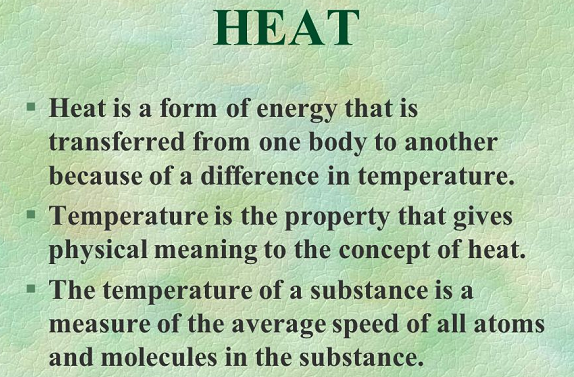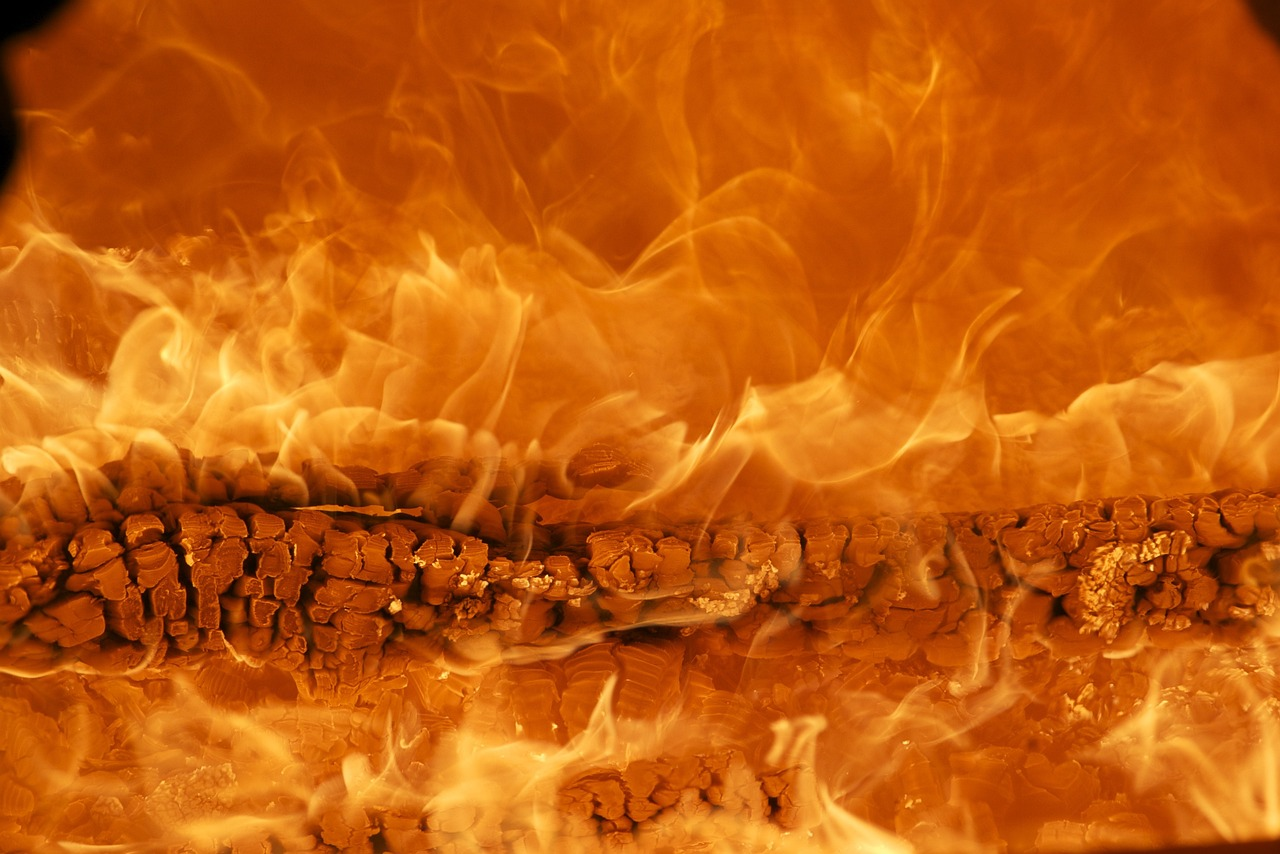Unit 19: Heat
Unit 19: Heat

Unit 19: Heat

Unit 19: Heat
Heat is the transfer of kinetic energy from one medium or object to another, or from an energy source to a medium or object. Such energy transfer can occur in three ways: radiation, conduction, and convection.
The standard unit of heat in the International System of Units (SI) is the calorie (cal), which is the amount of energy transfer required to raise the temperature of one gram of pure liquid water by one degree Celsius, provided the water temperature is higher than the freezing point and lower than the boiling point. Sometimes the kilocalorie (kcal) is specified as a unit of heat; 1 kcal = 1000 cal. (This is the so-called diet calorie.) Less often, the British thermal unit (Btu) is used. This is the amount of heat required to raise the temperature of one pound of pure liquid water by one degree Fahrenheit.
An example of heat by radiation is the effect of infrared (IR) energy as it strikes a surface. IR is an electromagnetic field capable of transfering energy from a source, such as a fireplace, to a destination, such as the surfaces within a room. Radiation does not require an intervening medium; it can occur through a vacuum. It is responsible for the warming of the Earth by the sun.
Heat by conduction takes place when two material media or objects are in direct contact, and the temperature of one is higher than the temperature of the other. The temperatures tend to equalize; thus the heat conduction consists of a transfer of kinetic energy from the warmer medium to the cooler one. An example is the immersion of a chilled human body in a hot bath.
Heat by convection occurs when the motion of a liquid or gas carries energy from a warmer region to a cooler region. A good example of convection is the tendency of warm air to rise and cool air to fall, equalizing the air temperature inside a room containing a hot stove. Heat convection (along with conduction) is believed to take place inside the Earth, transfering kinetic energy from the inner core through the outer core and mantle to the crust. In this situation, the outer core and the mantle behave like liquids over long periods of time.
The Different Types of Heat
Understanding the different types of heat, and how they work is a great way to decide the type of heating products you want in your home. So here’s the science bit…
Heat is transmitted in three ways: radiation, convection and conduction.
The optimum mix for human comfort is a blend of 80% convected and 20% radiant from a heating appliance.
- Radiant Heat - gives a feeling of comfort.
It is like the warmth from the sun or the warmth when you hold your hands in front of fire or radiator in the winter. The air itself is not heated directly, rather the rays of energy travel in straight lines only converting to heat when they strike and are absorbed by the body.
- Convected heat - Is carried around the room in the form of heated air.
When air is heated, it expands, becoming less dense. The heavier, cooler air around the heater – under the force of gravity – displaces the warmer, lighter air upwards. As the heated air rises, it diffuses some of its heat, warming up air which is some distance from the heat source. The hotter the initial heat source, the further the convection current will flow before diffusing into the air.
- Conducted heat - Travels through solid objects.
If you heat a bar of iron at one end, the other end with gradually become hot. Even using the best materials for conduction, this is a relatively slow method of transmitting heat.
Vocabulary
Lesson Reading

